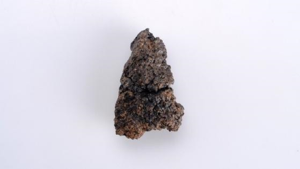Land of Rice, Japan II Umeboshi rice balls
Yoshie Doi

Japan’s oldest rice ball, owned by Ishikawa Prefecture Buried Cultural Properties Center

Pictures of Edo Famous Places (End of the Edo Period) Onigiri during agricultural work in the Edo period
Lately, when I’ve been walking around Kyoto, I’ve noticed that there are a lot more onigiri restaurants than before. Convenience stores also sell various types of rice balls. Depending on the convenience store, they are called rice balls or rice balls differently. The name seems to vary depending on the region. I saw onigiri and bento shops on the streets of Paris while staying in Paris. Even though rice consumption is decreasing, the number of onigiri shops and bento shops is increasing.
A lump of carbonized rice excavated from the Sugitani Chanobatake ruins in Ishikawa Prefecture, said to be the oldest rice ball in Japan. It is believed that during the Yayoi period, onigiri were not an everyday meal but an offering to the gods.
In modern Japan, most people eat three meals a day, but until around the Muromachi period, it was common to eat two meals a day. In “Oan Monogatari”, it is written that during the Sengoku period, people ate two meals a day, but the reason why people had three meals a day was due to the use of rapeseed oil lighting in the latter half of the Edo period, which increased the amount of time they were active. It seems that people started eating three meals a day from around the Genroku era. Around this time, charcoal became popular, and in Edo people started grilling fish and selling soba and oden at food stalls.
From the Kamakura period to the Muromachi period, several changes occurred in the Japanese diet. One of them is that the custom of eating three meals a day has become established since the Genroku era of the Edo period. In ancient Japan, it was common to wake up before dawn to work, return home around 10am when the temperature rose, and eat breakfast and lunch there. It is said that the working hours of government officials in the Nara period were from early morning until around noon. The party started at 2pm and lasted until sunset.
Even in the late Kamakura period, Emperor Godaigo seems to have eaten breakfast around noon and dinner around 4 p.m. The only people awake during the night were monsters or nocturnal animals. The reason you shouldn’t make loud noises at night was that this monster would come.
Summers in Japan are particularly hot and humid, so it makes sense to get work done while it’s cool, and people from ancient times to the Middle Ages lived based on sunrise and sunset, rather than modern people who went to bed later because they had access to light. Perhaps it was more in line with your body’s natural rhythm. Even in Kyoto, common people enjoyed the cool evening breeze on the Kamogawa River on hot summer days.
Kamakura samurai also ate two meals a day, but during actual battles they brought rice balls with them to eat. It is said that during the Jokyu War, which occurred in 1221 (3rd year of Jokyu) in the early Kamakura period, the Kamakura shogunate distributed rice balls containing pickled plums to the samurai. It seems that samurai always ate pickled plums when they went to war.
At a restaurant, I once had a replica of the garlic miso that Miyamoto Musashi carried with him, and I ate it there. I realized that samurai paid careful attention to their health and diet.
Plums were introduced from the continent during the Asuka period. Plum blossoms first entered Japan, and salted plums were described as “Umeboshi” in the Heian period “Ishinpo.” When making umeboshi, we add perilla not only to add flavor, but also because perilla is a medicinal herb that eliminates toxins. At that time, vegetables were selected for their medicinal properties.
When Emperor Murakami (reigned 946-967) contracted an epidemic, he recovered by drinking tea with pickled plums and kelp, and this is the origin of “Daifuku-cha,” which is eaten on New Year’s Day. Since this year was the year of the monkey, pickled plums in the year of the monkey are prized as something special. In Kyoto, people eat daifuku tea on New Year’s Day before toso. Nowadays, expensive ones containing gold powder are the mainstream.
It is assumed that the rice at that time was glutinous brown rice, and rice balls were carried around wrapped in bamboo bark or tree leaves. Around the Genroku era, Asakusa seaweed board became popular, and it became popular to sprinkle seaweed on onogiri.
Modern rice balls using non-glutinous rice have been around since the end of the Kamakura period, and it is surprising to learn that rice balls made with pickled plums have been eaten by samurai since the Jokyu War.
The end of document
